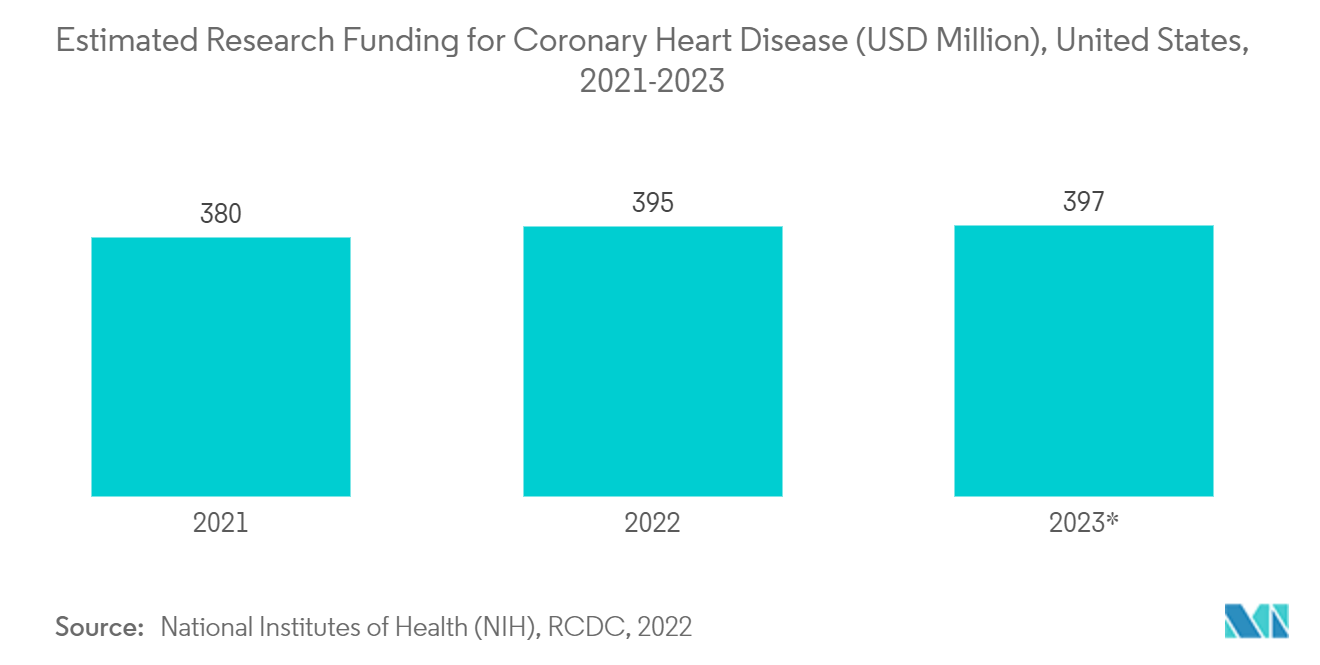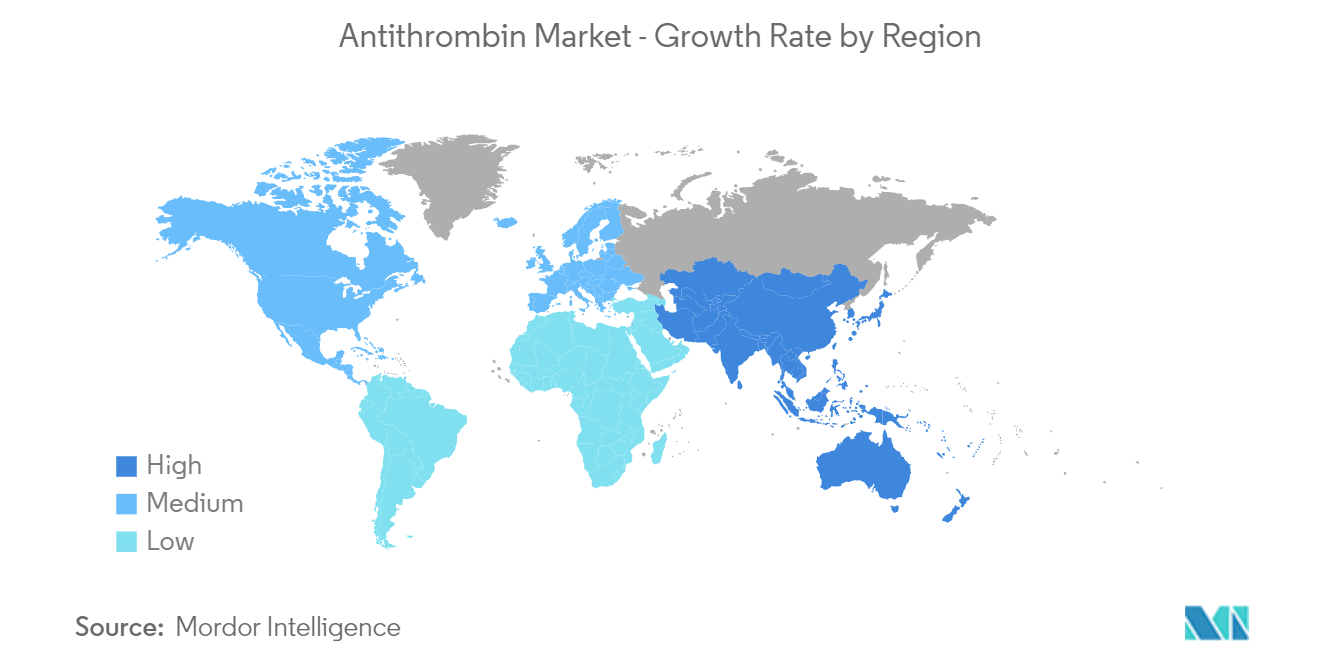Market Trends of Antithrombin Industry
This section covers the major market trends shaping the Antithrombin Market according to our research experts:
Therapeutics Segment is Expected to Hold a Large Market Share Over the Forecast Period
Antithrombin can be used as a treatment option in conditions like cardiac surgeries and in genetic conditions like hereditary antithrombin deficiency. Hereditary antithrombin deficiency, also known as antithrombin III deficiency or AT III deficiency, is a disorder in which individuals are at increased risk for developing blood clots and causing various heart diseases. Approximately 50% of individuals with Hereditary antithrombin deficiency will develop one or more clots in their lifetime, usually after adolescence which need proper treatment with antithrombin. Hence, the segment is expected to drive the market over the study period.
Furthermore, new research studies on the treatment of various antithrombin deficiencies can expand the applications of various drugs and help the market to grow over the study period. For instance, the study report published by the journal Thrombosis Update in December 2021 recommended using low molecular weight heparin (LMWH) during pregnancy with regular anti-Xa monitoring to ensure that women receive adequate antithrombotic therapy. Due to the effectiveness of LMWH activating antithrombin, substantial doses of LMWH are typically needed in people with antithrombin deficiency. Hence, with new studies, the usage of antithrombin drugs increases, which is expected to drive the market over the study period.

Asia-Pacific is Expected to be the Fastest Growing Region Over the Forecast Period
The Asia-Pacific region is expected to show high growth due to developing nations such as India and China that are embracing new treatment procedures and techniques to combat various diseases. The increase in non-refundable incomes in developing countries and their increasing capability to invest more money in advanced healthcare creates more opportunities for the market in the Asia Pacific. Furthermore, the rising burden of old age, along with increasing thrombosis diseases and new studies for antithrombin deficiency in the region, is expected to drive the market over the forecast period.
The population of the elderly in India has been increasing, which is a major factor driving the market in the region. For instance, as per the study by NSO, in 2021, the proportion of the elderly population in India was projected to be 10.1% in 2021 and 13.1% in 2031. As the elderly population increases, the risk of thrombosis is high and is expected to have an increased demand for antithrombin treatment and drive the market.
Furthermore, the new studies on antithrombin deficiency in the region are expected to increase the products of antithrombin and drive the market. For instance, as per the Frontiers in Neurology in June 2022, antithrombin deficiency is caused by various reasons, one of which is by inherited variants in the SERPINC1 gene. Hence, the SERPINC1 gene test is useful in determining the cause of antithrombin deficiency-related arterial thrombosis, especially ischemic stroke. Thus, the new studies in antithrombin deficiency help to increase the usage of specific diagnostic products and drive the market over the forecast period.


